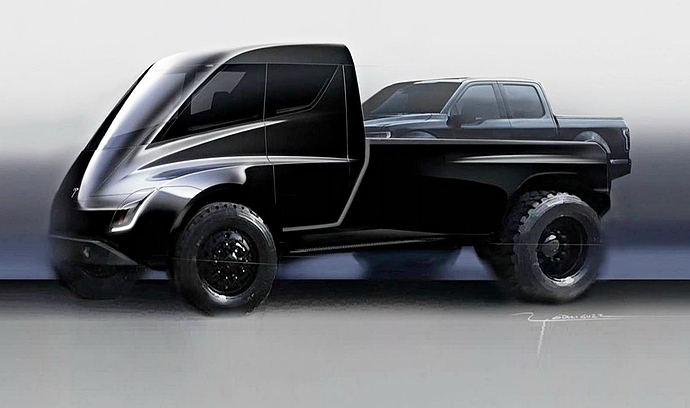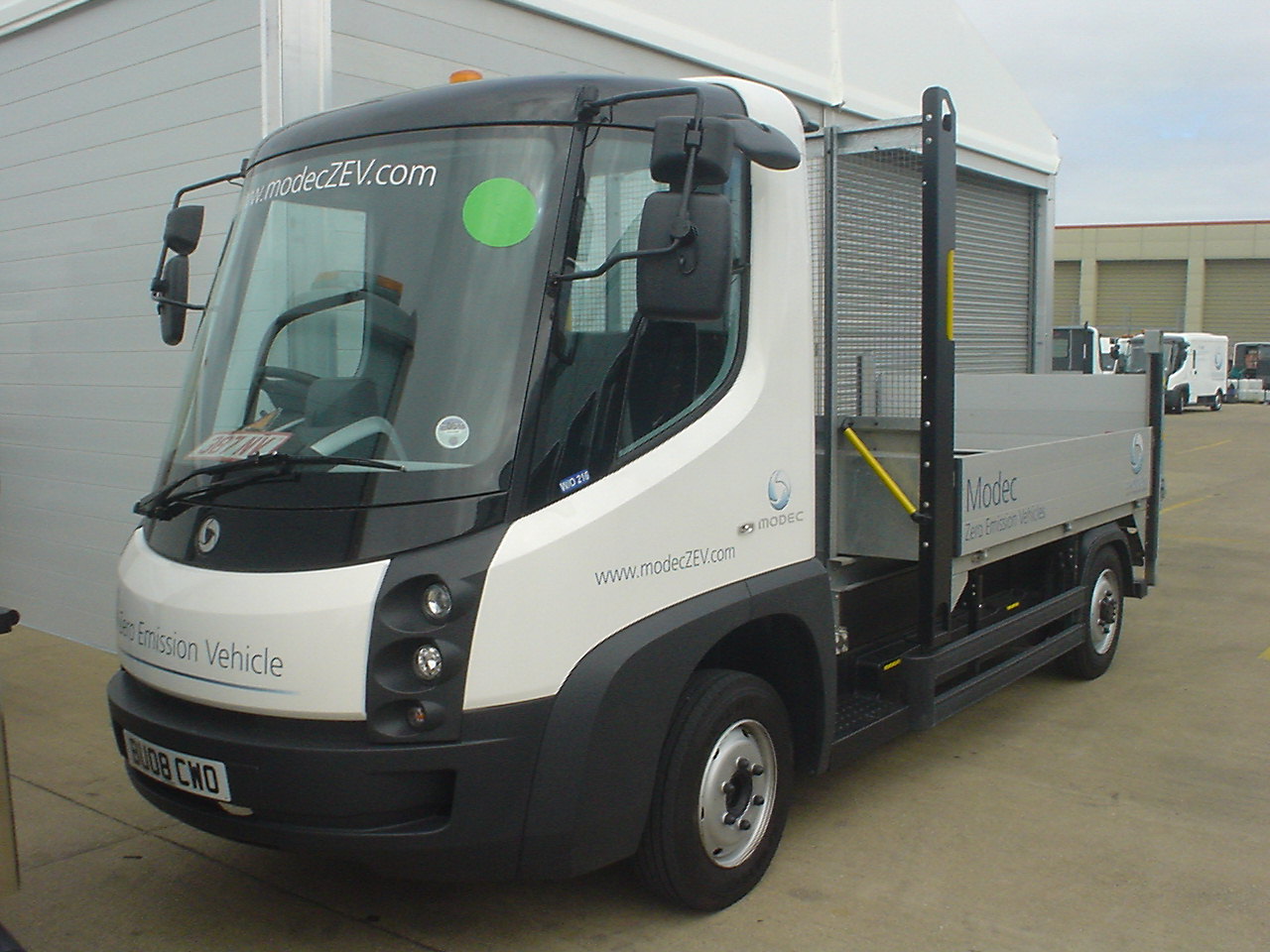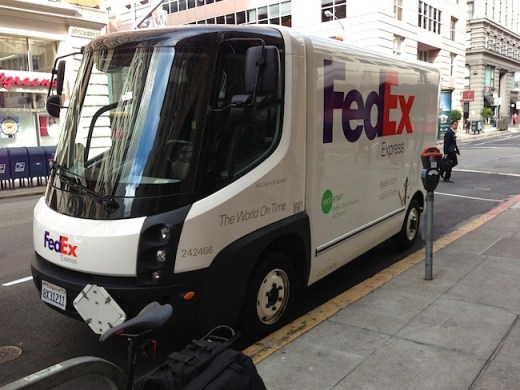Ford is invested in electric truck; Ford invests $500 million in electric truck company Rivian All-Electric Ford F-150 Confirmed – New EV Pickup Truck
Yup that is the one. It has a nice tow rating as I remember.
700 hp 0-60 in 3.2 seconds and 400mile range.
80% re charge in 15 minutes.
Rivian R1T
Those are insane specs but it was designed from the ground up for a play truck. The Workhorse was designed for the power companies mutual aid. Range and onsite power generator was the orginal design goal so the power company could use the Workhorse for AC power at the jobsite. It is very cool that you can use the Workhorse as a AC power supply it pretty much makes it additional batteries and a generator for someone off grid. They are just totally different design approaches. One loads up a ton of batteries the other uses less batteries and a backup generator. To me the Workhorse design makes since because most people don’t need to tow a heavy load a long distance very often. Even with my farm I only haul a long distance when I take cattle to market which will never be an everyday thing here. Most of my hauling is short less then a mile from the fields to the barn.
But on the bright side both will being back closed or in the process of closing factories in the USA or north America anyway. I can’t remember off the top of my head if that Rivian is build in the USA or Canada but Workhorse is in talks for the GM factory which is closing in Ohio. Great to see a company stepping up to put people back to work when another company closes the doors. Regardless of what they make it is jobs.
Rivian actually bought a factory in Illinois a couple of years ago. Ford just put money into Rivian. I am unsure what Ford gets out of the deal. If those specs are true, possibly Rivian and Ford will share components which isn’t unheard of.
The trucks have been at the trade shows already and doing demos so I suspect the spec is correct. Ford hasn’t said what they will get out if the deal but there is speculation that Ford will rebadge the truck as an F serries with better body styling I hope…
The r1t is built on a skateboard platform so basically Ford will get the skateboard platform to use with their trucks and they just put the F-150 body on the skateboard
General Motors almost had the platform but they wanted exclusive rights to it and rivian is not going to be exclusive with any one brand
There are already F-150 test vehicles driving around on Rivian platforms. I think these trucks are for Rivian so to not attract attention.
The exclusive rights is interesting because the only thing I have heard about Workhorse on GM with respect to the Ohio factory is Workhorse would have a minority share and they are still trying to work out the details that was weeks ago now so I wonder if it is the same stumbling block. Workhorse already has delivery van orders for their platform so they won’t give up right to that market it is allowing them to grow organically.
I highly doubt it. Workhorse was founded by investors in ‘98 to take over General Motors’ P30/P32 series stepvan and motorhome chassis manufacturing. There is a long history there.
Apparently there is a congressional hearing over the sale/use of the factory.
Interesting article on Electrek about the future Tesla Electric Truck.
What they pictured for the Tesla truck isn’t a truck It is a Chevy SSR with a lift kit and a butt ugly front end.
Sodium–nickel chloride (Zebra) battery
Workhorse Group Incorporated is an American manufacturing company based in Cincinnati, Ohio, currently focused on manufacturing electrically powered delivery and utility vehicles.
The company was founded in 1998 by investors who took over the production of General Motors’ P30/P32 series stepvan and motorhome chassis.[1] By 2005, they were taken over by Navistar International, which had been selling them diesel engines.[2] Navistar then shuttered the plant in 2012 to cut costs after having suffered heavy losses.[1]
In March 2015, AMP Electric Vehicles took over Workhorse Custom Chassis, changing the company name to Workhorse Group Incorporated, and began offering a range of electrically powered delivery vans.
The eStar was an all-electric van. Production began in March 2010 and first deliveries began two months later via its Workhorse Group division.[109] The technology used in eStar was licensed to Navistar in 2009 in a joint venture with Modec and Navistar bought the intellectual property rights from the Modec’s bankruptcy administrators in 2011.[111] The introduction of the eStar was supported by a US$39.2 million U.S. Department of Energy stimulus grant under the 2009 American Recovery and Reinvestment Act.[112]
The eStar had a 5,100 lb (2,300 kg) payload capacity available with a 14- or 16-foot cargo box. The vehicle was powered by a 70 kW 102 hp electric motor powered by an 80kWhr lithium-ion battery pack supplied by A123 Systems, and also used regenerative braking.[113] The electric van had a range of 100 mi (160 km), and a full charge took between 6 and 8 hours. By May 2010 the eStar had received U.S. Environmental Protection Agency (EPA) and CARB certifications. The eStar also met all Federal Motor Vehicle Safety Standards (FMVSS).[112]
The first vans were delivered in May 2010 to FedEx Express for use in Los Angeles.[114] Other customers included Pacific Gas and Electric Company (PG&E), The Coca-Cola Company, and Canada Post.[115][116][117] The eStar had a price of US$150,000.[112]
Navistar discontinued the eStar van in March 2013, as part of a corporate restructuring plan to focus on current profitability
A lower-temperature[11] variant of NaS batteries was the development of the ZEBRA (originally, “Zeolite Battery Research Africa”; later, the “Zero Emissions Batteries Research Activity”) battery in 1985, originally developed for electric vehicle applications.[12][13] The battery uses NaAlCl4 with Na±beta-alumina ceramic electrolyte.[14]
The Na-NiCl
2 battery operates at 245 °C (473 °F) and uses molten sodium tetrachloroaluminate (NaAlCl
4), which has a melting point of 157 °C (315 °F), as the electrolyte. The negative electrode is molten sodium. The positive electrode is nickel in the discharged state and nickel chloride in the charged state. Because nickel and nickel chloride are nearly insoluble in neutral and basic melts, contact is allowed, providing little resistance to charge transfer. Since both NaAlCl
4 and Na are liquid at the operating temperature, a sodium-conducting β-alumina ceramic is used to separate the liquid sodium from the molten NaAlCl
4. The primary elements used in the manufacture of these batteries have much higher worldwide reserves and annual production than lithium.[15]
Modec was an electric vehicle manufacturer in Coventry, in the United Kingdom, specialising in Commercial vehicles in the N2 category.[2] It unveiled its first model in April 2006 and announced its intention to commence series production in March 2007, with the first production vehicles destined for Tesco. Following a long-term decline in sales, it entered administration in March 2011, with all remaining assets and intellectual property sold to Navistar International.
The only product of the Modec company was the Modec EV commercial vehicle. It was produced in three versions; a chassis cab, box van and a dropside. All three shared a common wheelbase of 141.7 in (3.60 m) and a steel ladder frame chassis. The Modec has a kerb weight of 3.3 tonnes and a max gross capacity of 6.05 tonnes.[10]
The vehicles use an 102 bhp (76 kW; 103 PS) motor with 221 lb⋅ft (300 N⋅m) of torque and an exchangeable lead-acid battery which is charged from an external charger than requires a 32amp 3-phase supply to charge the vehicle for 6 hours, it also has options for Lithium-Ion Phosphate or Sodium Nickel chloride batteries.
It has a 100-mile (160 km) range and a 50 mph (80 km/h) top speed
Following a long-term decline in sales with a total production of around 400 vehicles, and following the failure of a rescue deal with Navistar, Modec entered administration in March 2011 with debts of over £40m.[6] Navistar subsequently bought the intellectual property rights from administrators Zolfo Cooper.[7]
Following the closure of the business and sale of the assets, Liberty Electric Cars hired the entire Modec engineering team and set up a new subsidiary “Liberty E-Tech”.[8] After failing in January 2011 to agree a deal with Navistar to buy the brand, in July 2011 Liberty launched a service called “e-Care” to service and maintain Modec vehicles, which presently covers the UK, France, Germany and Dubai.[9]
It was invented in 1985 by the Zeolite Battery Research Africa Project (ZEBRA) group at the Council for Scientific and Industrial Research (CSIR) in Pretoria, South Africa. It can be assembled in the discharged state, using NaCl, Al, nickel and iron powder. The positive electrode is composed mostly of materials in the solid state, which reduces the likelihood of corrosion, improving safety.[16] Its specific energy is 90 Wh/kg; specific power is 150 W/kg. The β-alumina solid ceramic is unreactive to sodium metal and sodium aluminum chloride. Lifetimes of over 1,500 cycles and five years have been demonstrated with full-sized batteries, and over 3,000 cycles and eight years with 10- and 20-cell modules. For comparison[citation needed], LiFePO4 lithium iron phosphate batteries store 90–110 Wh/kg, and the more common LiCoO2 lithium-ion batteries store 150–200 Wh/kg. A nano lithium-titanate battery stores 72 Wh/kg and can provide power of 760 W/kg.[17]
The ZEBRA’s liquid electrolyte freezes at 157 °C (315 °F), and the normal operating temperature range is 270–350 °C (520–660 °F). Adding iron to the cell increases its power response.[16] ZEBRA batteries are currently manufactured by FIAMM Sonick[18] and are used in the Modec Electric Van
Featured Image: Tesla Pickup Truck imagined by Turkey-based car designer Emre Husmen
It also isn’t an image from Tesla. The only image Tesla has actually provided was the image of his semi cab with a pickup bed also ugly in my opinion but the model 3 shows some hope that it might well look more normal when all is said and done. That said Elon likes to make things different.
That is the only official Tesla photo I have seen.
Lets hope it looks like the image in the link Ray posted. 
Those are based on the cab over design which is common in Europe and Asia. You get great visibility but the driver is also the first part of the crash. I never thought I wanted to run into something with one of those trucks. That said we have some pretty impressive safety requirements so if they pass I guess they must be safe.
I agree, but it doesn’t look like it has much of a box.
They might make a Ute. There was a pretty big up roar in Australia about the discontinuation of the Ute…


